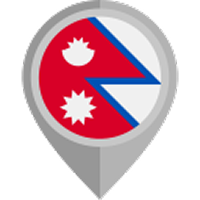Nepal vision | 03/02/2025
Druk Path Trek is on the top list of trekkers and travel enthusiasts who want to explore the Land of the Thunder Dragon. The perfect trek takes you from the capital of Thimphu to the appealing valley of Paro after crossing through high-altitude lakes and lush forests, allowing you to immerse in their natural heritage.
Aside from that, you pass through spinning prayer wheels, a lively atmosphere, the aroma of butter lamps, the chanting of lamas, and friendly local people, along with the ancient monasteries scattered in this region. These are their cultural gems and add depth to their culture and customs, which have been wrapped in the country for centuries now.
You start your journey from the beautiful valley of Paro, further ascending and reaching Jimilang Tsho along the rocky terrain, dense forests, and tumbling rivers with the reassuring smiles of Gangkar Puensum, Jichu Drake, and Chomolhari. With the rewards of cultural and natural immersion and a sense of accomplishment, the Druk Path Trek in Bhutan is quite alluring and appealing.
But the question arises: is the Druk Trek difficult? Well, the simple answer is not much. It is demanding, but good physical fitness and prior hiking experience, it helps to deal with the difficulties of the trek. Besides, the efforts of this trek reward you with an unparalleled experience of a lifetime.
Just stay with us for a while as we clear up all the queries regarding the Druk Path Trek difficulty and help you make your next adventure in Bhutan one of the best memories of your lifetime.
Druk Path Trek Overview
Druk Path Trek is an appealing trek through the heart of Bhutan, linking the valleys of Paro and Thimpu. The blend of awe-inspiring natural beauty, depth of cultural immersion, and moderate physical challenges is ideal for those seeking the beauty of Bhutan.
Walking off, your adventure begins by visiting the majestic Rinpung Dzong and fascinating Ta Dzong. The day ends by resting in the iconic landmarks and then visiting the legendary Takstang monastery lying on the dramatically perched cliffside. Further passing from Jele Dzong and Jongchulakha, you make your way to the Simkotra for the climax of the trek after immersing in the serene view of Mt Chomolhari, Jimlang Tso, a place to look out for trout fishing.
And after the physical challenge, your body deserves a treat. The dish of trout can be the feast you would not want to miss out on. After crossing the picturesque villages and traditional yak herder camps, you reach the Phaoding, the highest point of the trek via Labana La Pass (4,235m), further descending to Thimpu.
The initial climb of Paro to Jele Dzong is challenging, and the trek to Labana la Pass is also long and strenuous. But the rewards after the effort are worth everything.
- The walk along the serene and appealing high-altitude lakes like Jimilang Tsho and Simkotra Tsho reflects the towering white peak and immerses in their peaceful atmosphere.
- Along the way, you stroll across ancient dzongs (fortresses) like Jele Dzong and visit the iconic Taktsang Monastery (Tiger’s Nest), a spiritual and architectural marvel perched on a cliffside. A place to explore and wander in the rich traditions of Bhutan
- Passing through the white, pink, and red lush rhododendron forests, alpine meadows and peaceful ya pastures that make it in the list of nature lovers' paradise.
- The challenging part of the trek, the Labana La Pass (4,235m), gives you the Irish adrenaline and provides a profound sense of accomplishment, paired with unforgettable memories of Bhutan’s rugged beauty.

Is the Druk Path Trek Difficult?
The Druk Path Trek is moderately difficult and is perfect for those with a good level of fitness and previous trekking experience. While not as tricky as those high-altitude treks, there are still prevalent challenges requiring preparation and determination. Some factors increase the difficulty of the druk trek, so let us find out more about them.
Higher Elevation
As you embark on your journey, you will reach an altitude above 4000m, inviting several steep climbs and uneven terrain. Likewise, the ascent to Labana La Pass is long and strenuous, adding challenges to the trekkers. As the elevation increases, the oxygen level decreases, thus adding extra challenge to the trek.
In such a situation, you will have a hard time conquering those challenges as they demand endurance and mental resilience.
Altitude Sickness
Thus, the decreasing oxygen level increases the chance of shortness of oxygen flow in the trekker's body. It gives rise to the condition of altitude sickness. Nausea, vomiting, headache, and shortness of breath are the initial symptoms of altitude sickness. But if the condition becomes severe, it results in HAPE affecting the lungs, and HACE impacts your brain.
To tackle the condition, the best way is to slow your pace, hydrate yourself, and acclimatize in the altitude. The guide of Nepla Vision Treks is certified with first aid training and can help you with basic first aid situations. In case of emergency, it is recommended to take the help of a medical professional.
Remote terrain and long walking days
The trek of the Druk Path is around 5-6 days, and you should walk around 6-7hours, covering 10-15km. The combination of long hours and challenging terrain is yet another demand for the trail. Likewise, the coky path, loose gravel and occasional muddy sectors add a more tricky section for you to navigate.
For this difficulty, the best way is to train early and let yourself understand the route of the trek before you start the journey.
Who Can Do the Druk Path Trek?
The trek is ideal for:
- Moderately fit individuals with some trekking experience.
- Adventure seekers who enjoy a mix of physical challenges, cultural immersion, and natural beauty.
- Those willing to prepare physically and mentally for the demands of high-altitude trekking.
The trek is not recommended for:
- Absolute beginners with no prior trekking experience.
- Individuals with severe health conditions, especially related to altitude or physical exertion.
- Elderly travelers or those with limited mobility.

Tips to Prepare For Druk Path Trek
- Start by conducting detailed research on the Druk Path Trek. Look into the route, difficulty level, permits required, and cultural highlights.
- Select a certified trek operator with positive reviews to assist with accommodation, logistics, and overall planning. Booking with a reputable company ensures a smoother experience.
- Plan your trek during spring (March to May) or autumn (September to November) for the best experience. These seasons offer ideal weather, clear skies, and well-maintained trails, allowing you to appreciate the region’s natural beauty and cultural heritage fully.
- Carry essential gear without overloading your backpack. Overpacking can make the trek more challenging, so focus on lightweight and functional items.
- Stick to a budget and avoid unnecessary expenses. Since ATMs may not be available in remote areas, carry enough cash for accommodations, food, and any extra costs along the way.
To wrap up, The Druk Path Trek is a moderately challenging trek that requires a good level of fitness and preparation. While the trails are well-defined, the high altitude, steep ascents, and unpredictable weather can add to the difficulty. Although, with the correct planning, proper gear, and gradual acclimatization, this trek is an unforgettable adventure through Bhutan’s pristine landscapes and cultural landmarks.
If you're ready to take on this breathtaking journey, Nepal Vision Trek can help you plan a seamless and well-supported experience.
FAQS









